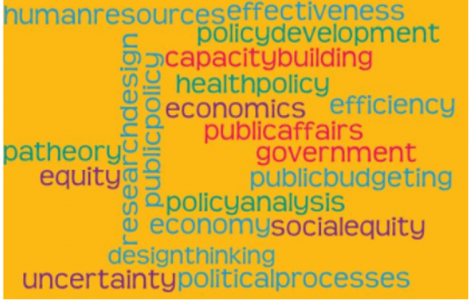Widgetized Section
Go to Admin » Appearance » Widgets » and move Gabfire Widget: Social into that MastheadOverlay zone
Reimagining Public Administration Education Post COVID-19: Part I
The views expressed are those of the author and do not necessarily reflect the views of ASPA as an organization.
By Sombo Muzata
November 14, 2021
Introduction
During the pandemic, I have been writing for PA Times, mainly focusing on COVID-19. In March 2020, I considered how prepared Africa was for the global pandemic and highlighted the poor funding of the public health system. In that article, I argued for a better global tax system that would allow all resource-producing countries in Africa to benefit from the trade in those resources—that would be a logical way to raise funding for healthcare and other social sectors. COVID-19 is complex, and I reflected on that complexity using a wicked problem framework. Then I looked at how COVID-19 was undoing Africa’s progress on the sustainable development goals (SDGs). This article will focus on where we are coming from and use that to reimagine public administration education post-COVID-19.

Public Administration Education Overview
Woodrow Wilson’s 1887 essay, “The Study of Public Administration,” is the reference point of the origins of the academic discipline of public administration. Public administration has been practiced for a long time. Professor Laila El Baradei discussed the practice of public administration in the ancient civilizations of Egypt, China and Rome in her recent article for PA Times.
Regarding education, a public administration degree prepares graduates to work in nonprofit organizations, government agencies and other social and civil service institutions. Many schools teach Public Administration programs. The accreditation institution Network of Schools of Public Policy, Affairs and Administration (NASPAA) roster for 2021/2022 shows that it has 316-member institutions that offer undergraduate and graduate degrees in public affairs and administration. At the master’s degree level, core courses taught include:
- Public finance
- Policy development/analysis
- Public administration theory
- Human resources management
- Quantitative/computational learning
- Research design
- A capstone experience
Public Administration has four pillars of economy, effectiveness, efficiency and equity. While the first three E’s, i.e., economy, effectiveness and efficiency, are well integrated into public administration education, equity was the last pillar to be established and remains secondary in emphasis.
The field is well established and is supported by notable institutions such as the American Society for Public Administration (ASPA), the Network of Schools of Public Policy, Affairs, and Administration (NASPAA), the Association for Public Policy Analysis and Management (APPAM) and the National Academy of Public Administration (NAPA).
Public Administration Education During COVID-19
The pandemic challenged everything, including education. Institutions of higher education quickly transitioned to online platforms and continued to offer classes. The core public administration courses were taught online, and necessary adaptations were implemented for the capstone projects. Also, there was a massive awakening on issues relating to social and racial equity. Critical events such as the murder of George Floyd and the subsequent global demonstrations, and the disproportionate impact of the pandemic on minorities and economically disadvantaged people across the world shined a spotlight on inequalities. The response by public administration scholars was remarkable. Those who championed social equity for many years continued to expose the extent of the problem of inequality. Informed by their decades of research, they shared what could be done differently.
Throughout the pandemic, conversations about the intersection of the pandemic and social and racial inequality took place regularly in numerous virtual conferences organized by public administration supporting institutions. Additionally, some schools that had been doing social equity work for many years and built agile systems in their course preparation offered special courses addressing the COVID-19 pandemic. For example, Dean Susan Gooden of the L. Douglas Wilder School of Government and Public Affairs at Virginia Commonwealth University taught Social Equity, COVID-19 and the Commonwealth of Virginia in the summer of 2020. It is yet to be established how many other public administration schools developed and offered courses to address COVID-19 as a social equity issue. Also, is this the time that equity finally takes equal importance alongside the other pillars of public administration?
It is important to note that during the COVID-19 pandemic, ideas that have been taught in public administration for years have been tested to the fullest extent, with the pandemic providing conditions for a natural experiment. The next article will consider some of these ideas.
Conclusion
Public administration, like all other fields, has been tested by the COVID-19 pandemic. The global operating environment will not be the way it was before the pandemic. The new reality (which continues to be a moving target) will require preparing graduates with skills to meet challenges that have not been known before. So, what should public administration education teach post-COVID-19? Part II will address this question.
Author: Sombo Muzata recently completed her Ph.D. in public policy and administration from the L. Douglas Wilder School of Government and Public Affairs at Virginia Commonwealth University. Before graduate school, Sombo worked as country manager in Zambia for the Swedish international nonprofit, Diakonia. She is active on the job market. [email protected]; Twitter @ChundaSombo


Dr Noah Kaliofas Marutlulle
March 12, 2022 at 2:37 pm
Brilliant piece of work. Well done.
Dr Noah Kaliofas Marutlulle
March 12, 2022 at 2:35 pm
Brilliant piece of work. Well done.